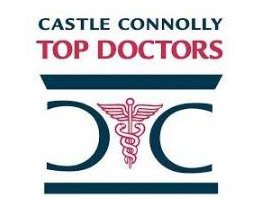Minimally Invasive Surgery
Minimally invasive surgery in NJ and NY
Today, many surgeons perform minimally invasive surgery. University Spine Center offers many different types of minimally invasive spine surgery. These innovative new surgical techniques allow surgeons to perform many types of spinal operations through very small incisions, sometimes just an inch long.
Advantages of minimally invasive spine surgery
Small incisions involve less damage to tissue. In open surgery, muscles, blood vessels and nerves may be cut or disturbed. This happens far less with tiny incisions. Muscles do not need to be retracted or pushed out of the way during surgery. This may help you recover more quickly. Other advantages:
- Potentially less blood loss
- Scars are much smaller
- Smaller incisions tend to heal faster
- Reduced operating time and faster recovery
- Can sometimes be done on an outpatient basis
University Spine Center will discuss surgical options with you. Every patient is unique and many factors determine the most appropriate surgery for you. As a general rule, herniated disc, spinal stenosis and certain spinal deformities can be effectively treated with minimally invasive spine surgery. Procedures include, but are not limited to:
- Anterior and posterior lumbar interbody fusion (ALIF and PLIF)
- Anterior cervical discectomy and fusion
- Microdiscectomy (treatment for sciatica)
- Cervical microframenotomy
- Extreme lateral interbody fusion (XLIF)
- XSTOP for spinal stenosis
- Surgery to implant interspinous spacers
- Vertebroplasty
- Kyphoplasty (kyphosis/humpback)
- Cervical posterior decompression
- Cervical/lumbar decompression
- Micro transforaminal lumbar interbody fusion (TLIF)
Risks and benefits of minimally invasive spine surgery
Every surgical procedure carries potential risks as well as benefits. While minimally invasive spine surgery is increasingly common and offers many advantages over open surgical procedures, it is not risk-free. Discuss the risks of this or any surgery with your University Spine Center physician.
What to expect from minimally invasive spine surgery
The University Spine Center team will help advise you before your surgery of what to expect. The surgery will be explained to you along with instructions for what to do before you arrive. Many minimally invasive surgeries can be done as outpatient procedures under local anesthesia.
If you smoke, you will be asked to quit as far in advance of surgery as possible. This is very important since smokers experience extra risk during surgery. Even quitting for a short time before surgery is helpful. You may be required to undergo X-rays or other image scans before surgery.
After minimally invasive spine surgery
Outpatient minimally invasive spine surgery means that the patient can return home that night. Depending on your surgery, your condition and other factors, you may be asked to stay in the hospital for recovery for a few hours or possibly overnight. Because there is less tissue disruption and a small incision, recovery may be faster and easier. The University Spine Center surgical team will provide instructions for your home care to facilitate a speedy and successful recovery.





